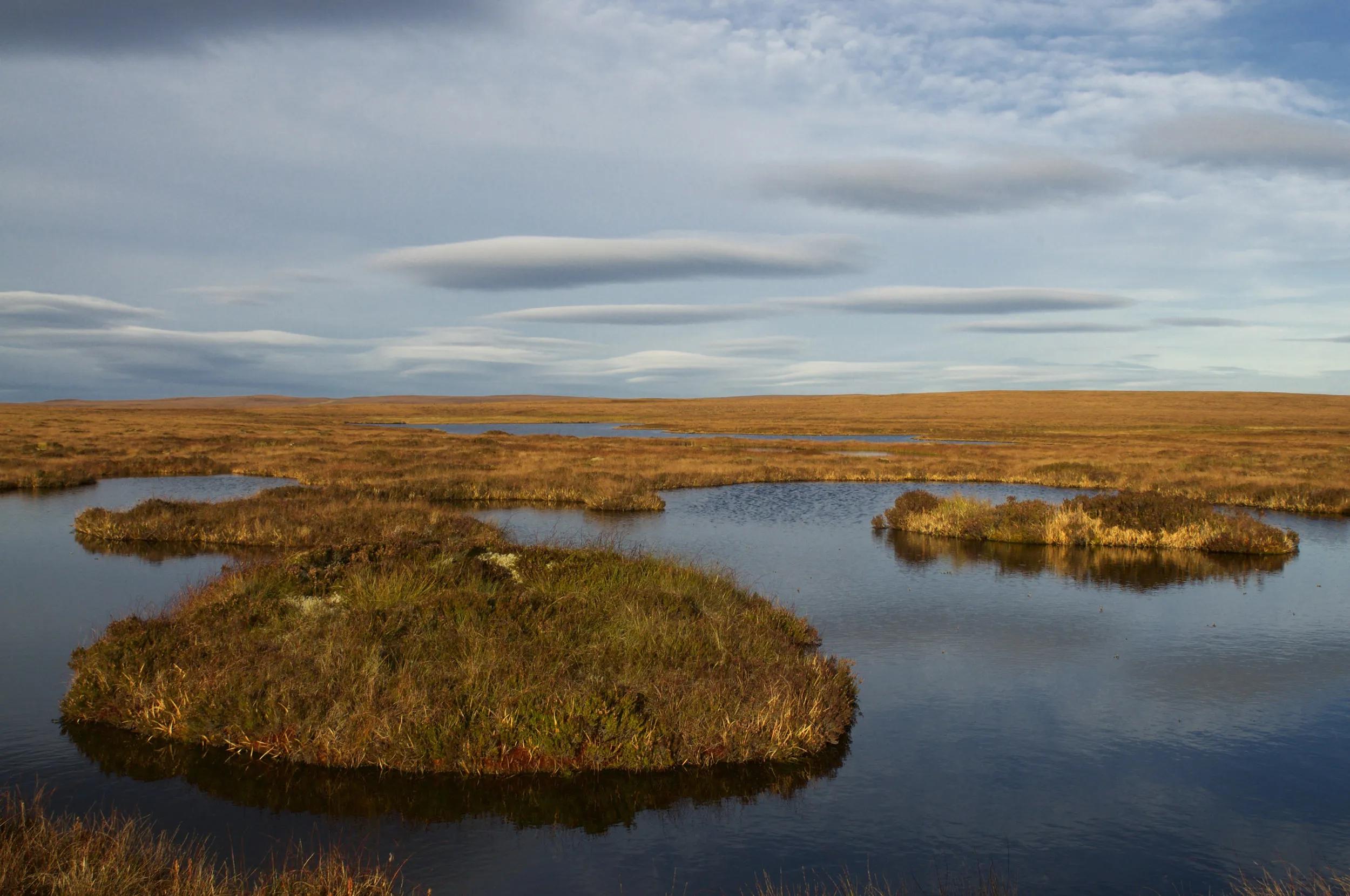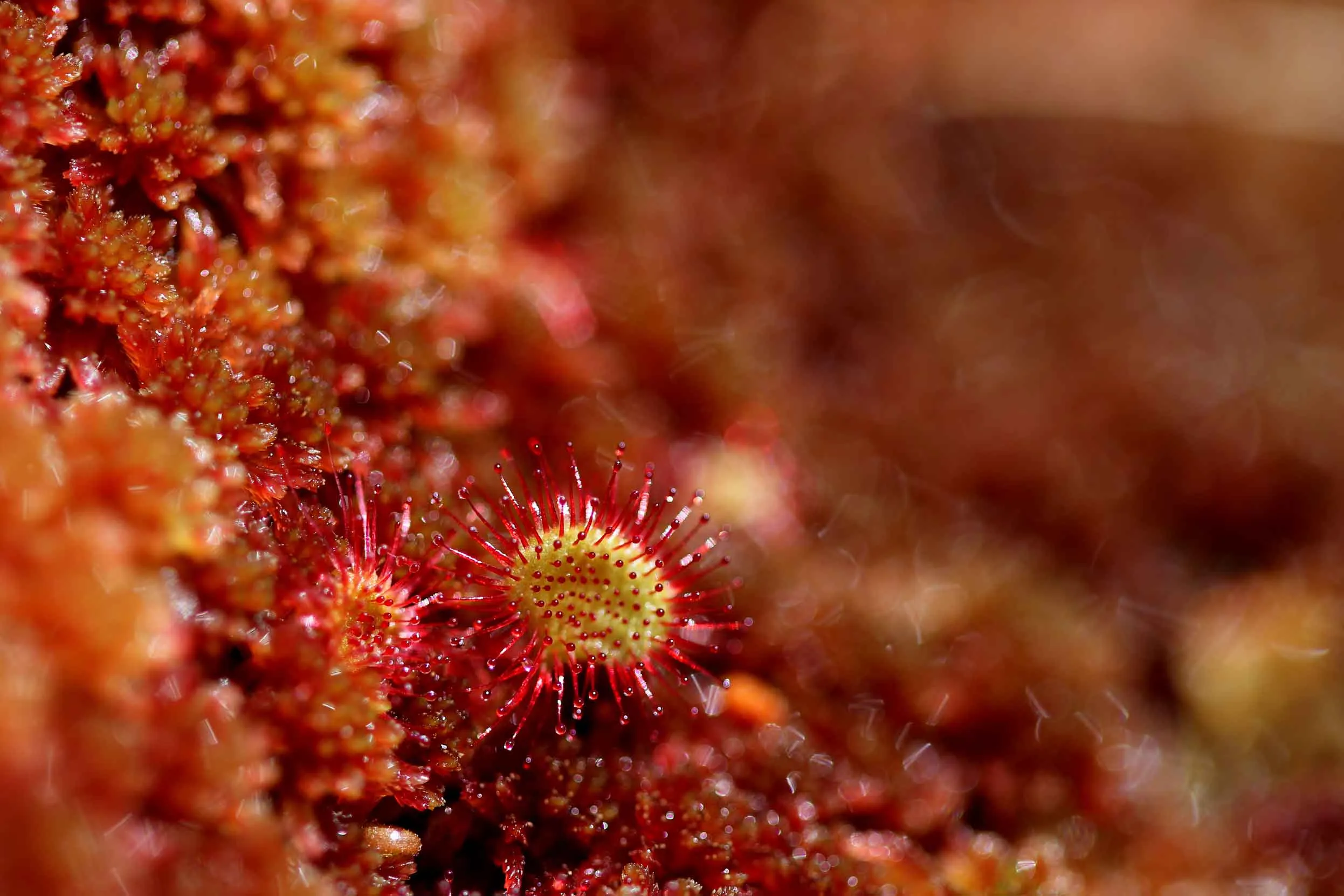Peatland restoration: a natural solution to climate change
At first glance, open, treeless expanses of peatland can seem pretty desolate, but when in good condition these soggy habitats teem with rare and unusual species, and have a crucial role to play in tackling the nature and climate crisis.

On this page
What are peatlands?
Often overlooked and underrated, peatlands are incredibly special and fragile habitats. They form when layer upon layer of dead plants accumulate and partially decay in waterlogged conditions, trapping the carbon the plants had captured from the air while alive. Over time this creates rich, dark peat that looks a bit like a soggy chocolate cake, topped with a layer of peat-forming mosses and other vegetation.
Peatlands grow an average of just a millimetre each year, which means that it takes 1,000 years for just one metre of peat to form. In places like Scotland’s Flow Country, the peat can be 10 metres deep, revealing just how ancient these habitats are.

Why are peatlands under threat?
Unfortunately, over centuries humans have destroyed and degraded vast swathes of peatlands by draining them to make way for farming and forestry, and by extracting peat for use as fuel and compost. Grazing by sheep and deer, and burning for grouse moor management, have also left areas of peat exposed and vulnerable to drying out.
If peatlands become damaged, dry and degraded in this way they can’t perform their vital functions and instead of sequestering carbon they actually emit it, contributing to climate change.
.jpg)
The benefits of healthy peatlands
As well as the vital role they play in fighting climate change, peatlands also help to protect against flooding by slowing the flow rainwater over land. They also help to maintain water quality by absorbing and filtering rainwater, a bit like a giant sponge. Peatlands provide homes for an array of species too, including Hen Harriers, Golden Plovers and specialised plants, such as Sphagnum mosses.
Carbon-storing powerhouses
In the UK we have an area of blanket bog (a special type of peatland) equivalent to 2.5 million football pitches, most of which is found in the uplands. This blanket bog stores (sequesters) almost 3,000 million tonnes (three gigatonnes) of carbon. Keeping this carbon locked up in peat is critical to tackling climate change. If the peat is allowed to dry out, the carbon is released into the atmosphere, further contributing to climate warming.
Peatland restoration: bringing bogs back to life
When it comes to peatlands, wetter really is better, so we’re carrying out work at various sites across the UK to restore areas of peatland to their squelchy, carbon-storing glory.
In England, Wales and Northern Ireland, we are working with United Utilities, Hafren Dyfrdwy and Northern Ireland Water to restore large areas of blanket bog in the Peak District (Dove Stone), Lake District (Haweswater), Lake Vyrnwy (Wales) and the Garron Plateau (Antrim, Northern Ireland).
In Scotland, we are restoring peatlands across numerous sites, including Abernethy in the Cairngorms and the Flow Country in north Scotland, where we’re removing trees from a vast area of former blanket bog.


